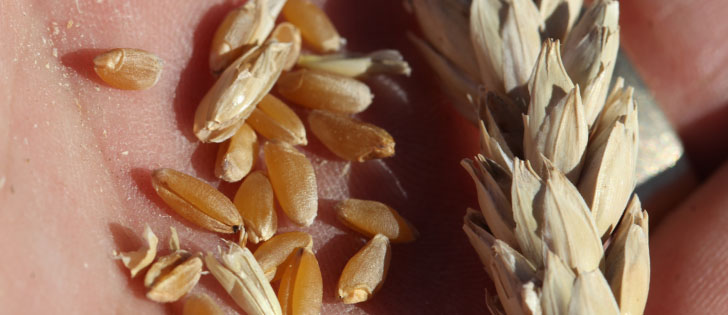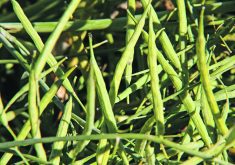Spring seeding conditions are forecast to be cool, so attention to soil temperature will be needed when seeding canola.
Troy Prosofsky of the Canola Council of Canada recommends the use of a soil thermometer.
He told members of the Southern Applied Research Association March 3 to check soil temperature twice daily, at 8 a.m. and 5 p.m., for several days before seeding.
When the two figures average 5 C, it’s safe to begin.
“Lots of guys like to get in there as soon as that snow is gone and start seeding,” said Prosofsky.
Read Also

Anti-separatist movement targets rural Alberta
Former deputy premier Thomas Lukaszuk’s anti-separatism Alberta Forever Canada petition campaign expects to run full steam ahead into the province’s farming regions
But emergence can be a problem if the soil is cold.
“The problem with cooler temperatures is emergence, increased exposure to seedling diseases and it impairs the protein production in the leaves,” he said.
However, Prosofsky acknowledged that conditions aren’t always ideal when bad weather and many acres are involved.
“If you do have large acres and it looks like it’s going to be a small window that we have to climb through for seeding, we do have some recommendations.”
A higher seeding rate is recommended if soil is below 5 C. As well, growers should slow down when seeding to ensure optimum placement in the first half-inch of soil.
Prosofsky doesn’t recommend seeding deeper to connect seed with available moisture.
“If you’re putting it in a little deeper, the beginning of the season is definitely not the time,” he said.
“The soil temperatures are way too cold. That seedling does not have enough power, enough energy to come out of 2.5 inches of soil, especially if it’s at two degrees.”
After emergence, he encouraged growers to scout crops for cutworms, which he thinks may be a problem this year.
He recommended checking areas of greener growth and parts of the field that warm quickly, such as high spots, south-facing slopes and sandy areas. Growers should check for worms in the top two inches of soil.
“Also, look for congregating birds, ravens or seagulls. If you see them on a side hill, there’s something going on out there. They’re feeding on something, so go kick some dirt.”
Prosofsky said he thinks cutworm damage is often misdiagnosed by growers as frost damage or poor emergence from deeper seeding.
If cutworms are found, he advised growers to cut them open and examine the inside.
“If there is green guck inside, then they are still feeding. Once they’re done feeding, you’ve probably missed the window for economical spraying.”















